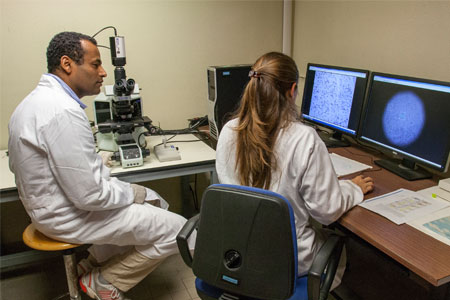- Authors:
-
Monasta, Lorenzo; Pierobon, Chiara; Princivalle, Andrea; Martelossi, Stefano; Marcuzzi, Annalisa; Pasini, Francesco; Perbellini, Luigi
- Title:
-
Inflammatory bowel disease and patterns of volatile organic compounds in the exhaled breath of children: A case-control study using Ion Molecule Reaction-Mass Spectrometry
- Year:
-
2017
- Type of item:
-
Articolo in Rivista
- Tipologia ANVUR:
- Articolo su rivista
- Language:
-
Inglese
- Format:
-
Elettronico
- Referee:
-
No
- Name of journal:
- PLoS ONE
- ISSN of journal:
- 1932-6203
- N° Volume:
-
12
- Number or Folder:
-
8
- Page numbers:
-
e0184118-e0184118
- Keyword:
-
Inflammatory bowel diseases (IBD)
- Short description of contents:
- Inflammatory bowel diseases (IBD) profoundly affect quality of life and have been gradually increasing in incidence, prevalence and severity in many areas of the world, and in children in particular. Patients with suspected IBD require careful history and clinical examination, while definitive diagnosis relies on endoscopic and histological findings. The aim of the present study was to investigate whether the alveolar air of pediatric patients with IBD presents a specific volatile organic compounds' (VOCs) pattern when compared to controls. Patients 10-17 years of age, were divided into four groups: Crohn's disease (CD), ulcerative colitis (UC), controls with gastrointestinal symptomatology, and surgical controls with no evidence of gastrointestinal problems. Alveolar breath was analyzed by ion molecule reaction mass spectrometry. Four models were built starting from 81 molecules plus the age of subjects as independent variables, adopting a penalizing LASSO logistic regression approach: 1) IBDs vs. controls, finally based on 18 VOCs plus age (sensitivity = 95%, specificity = 69%, AUC = 0.925); 2) CD vs. UC, finally based on 13 VOCs plus age (sensitivity = 94%, specificity = 76%, AUC = 0.934); 3) IBDs vs. gastroenterological controls, finally based on 15 VOCs plus age (sensitivity = 94%, specificity = 65%, AUC = 0.918); 4) IBDs vs. controls, built starting from the 21 directly or indirectly calibrated molecules only, and finally based on 12 VOCs plus age (sensitivity = 94%, specificity = 71%, AUC = 0.888). The molecules identified by the models were carefully studied in relation to the concerned outcomes. This study, with the creation of models based on VOCs profiles, precise instrumentation and advanced statistical methods, can contribute to the development of new non-invasive, fast and relatively inexpensive diagnostic tools, with high sensitivity and specificity. It also represents a crucial step towards gaining further insights on the etiology of IBD through the analysis of specific molecules which are the expression of the particular metabolism that characterizes these patients.
- Product ID:
-
98777
- Handle IRIS:
-
11562/968092
- Last Modified:
-
November 15, 2022
- Bibliographic citation:
-
Monasta, Lorenzo; Pierobon, Chiara; Princivalle, Andrea; Martelossi, Stefano; Marcuzzi, Annalisa; Pasini, Francesco; Perbellini, Luigi,
Inflammatory bowel disease and patterns of volatile organic compounds in the exhaled breath of children: A case-control study using Ion Molecule Reaction-Mass Spectrometry
«PLoS ONE»
, vol.
12
, n.
8
,
2017
,
pp. e0184118-e0184118
Consulta la scheda completa presente nel
repository istituzionale della Ricerca di Ateneo 








